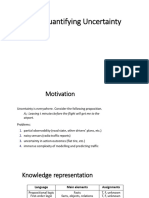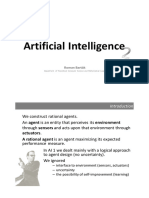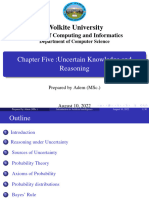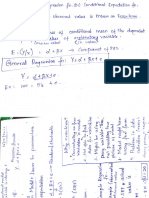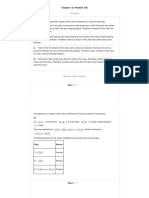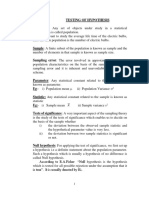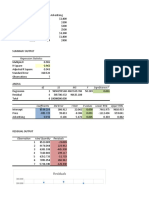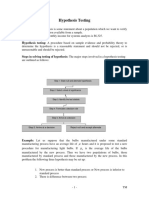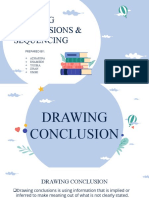0% found this document useful (0 votes)
10 views43 pagesLecture 7 - Probabilistic Reasoning
The document discusses probabilistic reasoning in artificial intelligence, focusing on handling uncertainty, probability, and inference. It highlights the importance of probability in decision-making under uncertainty and introduces concepts such as conditional probability and independence. Additionally, it covers methods for inference and the significance of joint and conditional independence in simplifying complex probability distributions.
Uploaded by
doangiahung241103Copyright
© © All Rights Reserved
We take content rights seriously. If you suspect this is your content, claim it here.
Available Formats
Download as PDF, TXT or read online on Scribd
0% found this document useful (0 votes)
10 views43 pagesLecture 7 - Probabilistic Reasoning
The document discusses probabilistic reasoning in artificial intelligence, focusing on handling uncertainty, probability, and inference. It highlights the importance of probability in decision-making under uncertainty and introduces concepts such as conditional probability and independence. Additionally, it covers methods for inference and the significance of joint and conditional independence in simplifying complex probability distributions.
Uploaded by
doangiahung241103Copyright
© © All Rights Reserved
We take content rights seriously. If you suspect this is your content, claim it here.
Available Formats
Download as PDF, TXT or read online on Scribd
/ 43







